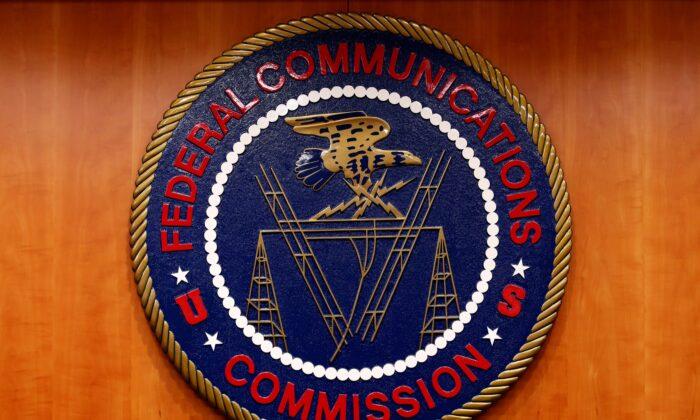A quarter century ago, on Feb. 8, 1996, President Bill Clinton signed into law the landmark Telecommunications Act of 1996. At the signing ceremony, the president’s rhetoric was soaring: “With the stroke of a pen, our laws will catch up with our future.”
Right in the 1996 Act’s preamble, Congress declared the statute’s purpose “to promote competition and reduce regulation.” Moreover, the conference report accompanying the law stated it was intended “to provide for a pro-competitive, deregulatory national policy framework.” There was much speechifying at the time contending that the 1996 Act marked the end of the “command and control” regulatory model embodied in the original Communications Act of 1934, a statute grounded in notions of policing monopolistic power enjoyed by then-dominant communications providers.
Well, it didn’t work out that way. Now, twenty-five years later, it’s time—really, past time—for Congress to adopt a new legislative framework, a “Digital Age Communications Act.”
However well-intentioned the deregulatory exhortations of the 1996 Act’s framers, from the beginning there was a disconnect between its proclaimed deregulatory purpose and the framework established for achieving that purpose. The ink was not long dry from the signing ceremony before it became clear that the law could not easily accommodate the accelerating transition from the Analog Age narrowband communications marketplace characterized by old-fashioned voice telephony to the Digital Age broadband marketplace characterized by the dynamic, ever-evolving Internet.
So, by December 2000, then-FCC Commissioner (and soon-to-be FCC Chairman) Michael Powell already was urging policymakers to focus on what he called a great “Digital Broadband Migration.” As he explained: “Computer systems working in parity with communications have spawned the Internet and the advanced networks we see today that fully integrate satellites, telephones, wireless devices, broadcasting and cable over fiber-optic, broadband, and wireless networks. The result is what we now call convergence.”
Convergence—enabled by the old saw that “a bit is a bit is a bit”—meant that digital communications, delivered over rapidly emerging broadband networks, were on the cusp of rendering obsolete the existing regulatory classifications embedded in the 1996 Act. These classifications—“telecommunications,” “information services,” “broadcasting,” “cable,” and “wireless”—are grounded in discrete techno-functional constructs, often called “stovepipes,” each with its own peculiar set of regulatory requirements. Importantly, and contrary to sound policy, these differing regulatory requirements ordinarily apply regardless of whether the services within the various constructs face effective competition.
There are many others, but perhaps the best example of the way the 1996 Act’s stovepipe regime impedes the development of sound communications policy relates to the long-running notorious “net neutrality” controversary. Put simply, this is all about the extent to which broadband Internet access providers, such as AT&T, Comcast, Charter, Verizon, and T-Mobile, should be regulated like public utilities in the fashion of the Ma Bell telephone monopoly of old. In the late 1990s, when cable companies first began offering broadband service, then-FCC Chairman William Kennard, appointed by President Bill Clinton, was beseeched by pro-regulatory interests to classify the cable broadband operators as “telecommunications” carriers under Title II of the 1996 Act. This would mean that the new broadband providers would be regulated like traditional monopolistic telephone companies, subject to rate, entry, and non-discrimination mandates.
Resisting these appeals, Chairman Kennard responded: “I don’t want to dump the whole morass of Title II [telephone] regulation on the cable pipe … This would not be good for the country.” His successor, Republican Michael Powell, led the FCC in completing agency proceedings that ultimately determined that cable, telephone, and wireless broadband Internet services are properly classified as lightly regulated “information services” rather than “telecommunications” services. The Supreme Court affirmed this determination in 2005 in the landmark Brand X case.
For present purposes, here’s the key point: The Court, in a 5-4 split, held that the two statutory classifications are ambiguous. Therefore, it upheld the FCC’s determination on the basis of applying Chevron deference, the judicial doctrine requiring courts to defer to agency interpretations of ambiguous statutory interpretations. This meant that a different group of agency commissioners, with a different political composition, could reverse the classification. That’s exactly what happened when, in February 2015, the Obama FCC held that Internet service providers were, in fact, telecommunications carriers subject to public utility-like regulation. Then, in December 2017, the Trump FCC reversed the Obama FCC’s decision, holding that Internet service providers are, in fact, information services providers. In each case, the reviewing courts deferred to the FCC’s latest classification interpretation.
While more could be said to demonstrate various ways that the Communications Act needs modernizing, this ping-ponging of the regulatory status of Internet service providers—who are central to so much of American life today—should be evidence enough. The Internet ecosystem looms too large in the nation’s economic, educational, and social life for there to be such instability in the law governing Internet providers.
In this Silver anniversary year, Congress should update the Communications Act, with special attention paid to resolving the regulatory status of Internet service providers. This must be done in a way that preserves their freedom and flexibility so that incentives to invest and innovate are not diminished. In today’s technologically dynamic Internet ecosystem, where Internet providers operate in a competitive marketplace, there is no justification for departing from the current light-touch regulatory regime.
Indeed, the way forward for modernizing the entire Communications Act is straightforward. Jettison the existing stovepipe framework, grounded in outdated techno-functional regulatory constructs, and replace it with an unambiguous direction to the FCC to apply a competition-based standard. In other words, the agency should be directed not to regulate communications providers absent convincing evidence of consumer harm attributable to a market failure.
Adoption of that guiding principle, twenty-five years after passage of the Telecom Act of 1996, would ensure, finally, that Congress’s intent “to promote competition and reduce regulation” is realized.


Friends Read Free